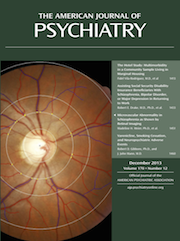A Month in the Country
From a distance of 40 years, Tom Birkin looks back on the summer of 1920, when he lived and worked inside an old church in a small village in the North of England. J.L. Carr’s A Month in the Country, first published in 1980, is the story of that summer. World War I has ended 2 years before the novel begins, but not for Tom, a shell-shocked veteran. His inner trauma is reflected in a humiliating facial twitch that comes, he tells us, “spasmodically…. It began at my left eyebrow and worked down to my mouth. I’d caught it at Passchendaele and wasn’t the only one either. The medics said it might work off given time” (p. 12). He was a signaler in the war, the person out alone beyond the front line, transmitting reports of the enemy’s movements. Like many traumatized people, 2 years later he is still out on his own, emotionally. His connection to the world around him is as tenuous as a signaler’s wire.
The novel is told in Tom’s self-deprecating, gently humorous voice. His tone is nostalgic, suffused with pleasure and affection and yearning for lost youth. Trained as a restorer of paintings on stone, he has been hired to uncover a medieval mural in the church of a rural Yorkshire village. He camps out in the church, since besides having his “nerves shot to pieces” (p. 34), he is close to penniless. He wants only to be alone to get on with his job, but that simple desire turns out to be impossible. For one thing, the kind stationmaster, Mr. Ellerbeck, observing Tom’s forlorn arrival, mobilizes his own family to the task of keeping the stranger fed and plugged into village life. Tom finds himself umpiring games and teaching the boys’ Sunday school class, which in his hands means answering eager questions about “the exact nature” (p. 52) of the dangers awaiting in London. Then there is an eccentric archaeologist, Charles Moon, himself a veteran, camping out in the field beside the church, and the vicar’s sensitive wife, Alice, with whom Tom conducts a wistful flirtation. He is not alone, nor is his work simply a job to be done. The painting emerging under his hands is revealed as an extraordinary work of art. Gradually, absorbed in his task, accepted by these new people, under the spell of the long, beautiful summer, Tom finds that life has, “flooded back, tingling to my finger-tips” (p. 95).
This short novel unfolds so artfully that it seems no more than a straightforward account of a summer idyll. But it is also a story of healing. It shows us the totality of one person’s experience. Is there a reproducible, therapeutic factor (or combination of factors) that helps Tom Birkin recover from trauma? Is it the Ellerbecks’ nonjudgmental kindness, or the companionship of Moon, who understands, from first-hand experience, Tom’s shell-shocked state? Or is it unreliable chance, which brings Alice into Tom’s life at just the right moment, or simply beauty itself, to which Tom is very sensitive: the golden summer, the breathtaking hidden painting?
The novel offers no answers. We are left with a nostalgic remembrance of a particular summer in Yorkshire. Somehow, Tom is reconnected with the human family and with himself; time no longer begins and ends at Passchendaele. This understated, whimsical novel has captured a small miracle.



